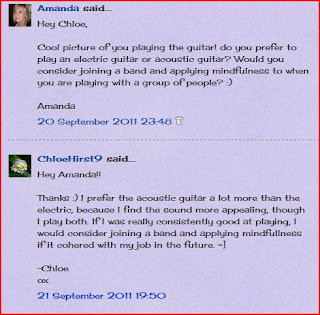The day I baked apple and cinnamon muffins was a wet rainy day. Rainy days always trigger my baking as this is when I did baking with my mum when I was young.The rainy days create connections from previous baking experiences. Rainy days connects me to the kitchen of my mothers home, to the mixing bowls my mum used, to the baking that I did using the bowls, to the baking that I did when I was young on rainy days. It brings back memories from my childhood and baking with my mum and sisters. I began searching for a recipe but could only find a recipe for blueberry muffins. I thought berries and apples are both fruit so id just substitute the recipe and go with the flow. The smell of the muffins in the oven filled the room. I then removed them from the oven. I did all the dishes.Doing the dishes is important in my spirituality as after I bake it is important to me to have a clean kitchen.
I used ethics when I considered what were the good and bad things about this baking experience. The good was that the baking was enjoyable and gave a sense of accomplishment, the bad were that I did not follow a recipe and it took a bit of time to do. I also considered what my muffins looked like (aesthetics), the muffins need to look appetizing and enjoyable to eat.The environment was cool as it was raining. The atmosphere was perfect for my baking as I was not rushed so it was a pleasant environment. This reminded me of a passage in an article that talked about occupational based activity analysis. It talked about how a persons interests, goals, abilities and the context all interact and put different demands on an activity (Crepeau, 2003). Baking consists of all my memories, connections, ethics and personal influences as well as the kitchen I bake in which put demands on how I bake.
Apple and cinnamon muffins ( my adapted recipe)
2 1/2 cups flour
1 teaspoon baking powder
1/2 cup sugar
2 eggs
1 cup milk
50g butter
1cup stewed apple
2 teaspoons cinnamon
1. Combine in one bowl sugar butter and eggs until light and fluffy
2.Mix in flour baking powder and cinnamon
3. Make a well in the center of the mixture and pour in milk and apples
4. fold together mixture, do not mix as muffins will turn tough
5. Bake at 180 degrees for 20minutes or until brown
Affordance are the environmental properties that support goal directed behaviour (Christiansen & Townsend, 2004
). It is the factors in the environment that provide potential for an opportunity these are through connections, memories and ethics for example .
Ambiance is the mood or atmosphere of the environment, it is the term used to describe
the overall effect of the physical and social features of an environment and the individual feelings behaviour, actions of a person (Algase, Yao, Son, Beattie, Beck & Whall, 2007)
Algase, D., & Yao, L., Son, G., & Beattle, E., & Bec, C., & Whall, A (2007). Initial psychometric of the ambiance scale: A tool to study person- environment interaction in dementia.
Aging & mental health. 11 (3): 266-272.
Crepeau, E. (2003). Analysing occupation and activity: A way of thinking about occupational performance. In Crepeau, E.. Cohn. & Schell B (Eds.).
Willard and Spackman's occupational therapy. (10th ed., pp 189- 198). Philadelphia: Lippincott, Williams & Wilkins
Christiansen, C., H & Townsend, E., A. (2010). Introduction to occupation: The art and science of living (2nd ed). New Jersey USA: Pearson Education Inc.









